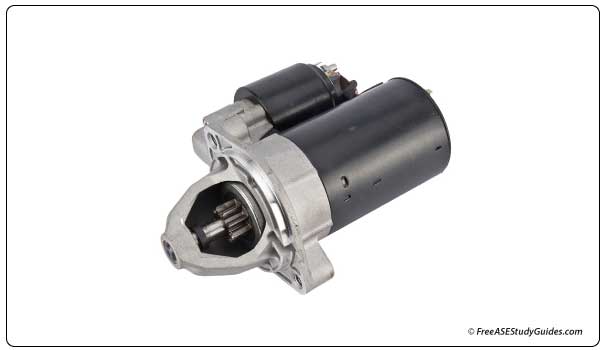Starter Current Draw Test

Perform a current draw test after the battery has been checked and found to be fully charged and in good condition. Visually inspect the starting system for any physical defects or loose connections. Bring the engine to normal operating temperature before performing this test. A cold engine requires more current than a warm engine does.

Use an electrical systems tester or an appropriate clamp-on ammeter/voltage meter to troubleshoot a slow start or no start condition. This test requires specifications and depends on the engine. For example, a four-cylinder should draw between 125 and 150 amps, a V-6 should draw between 150 and 175, and a large V-8 can draw well over 200 amps.
1. Connect the Ammeter.
2. Set the voltage meter to measure battery voltage (12.6V).
3. Disable the fuel or ignition so the engine will not start during the test.
4. Observe both testers (ammeter/voltage meter) as you crank the engine.
5. Never crank the engine for more than 15 seconds, and allow the starter to cool for 2 minutes between cranks.

If you use a separate ammeter and voltmeter instead of an electrical systems tester, the key is to observe the voltage and the amperage simultaneously. The voltage should remain at or above specifications (~10 Volts) while cranking the engine. High current draw and low cranking speed indicate a faulty starter or possible engine problems. Low cranking speed and low current draw indicate excessive resistance in the starter circuit. Always check specifications and remember the bigger the engine, the higher the current draw.

Slow cranking and high current draw typically indicate worn bearings or bushings inside the starter. Worn bushings will result in an off-center armature. This problem can result in poling and can throw off the alignment of the starter's magnetic fields.